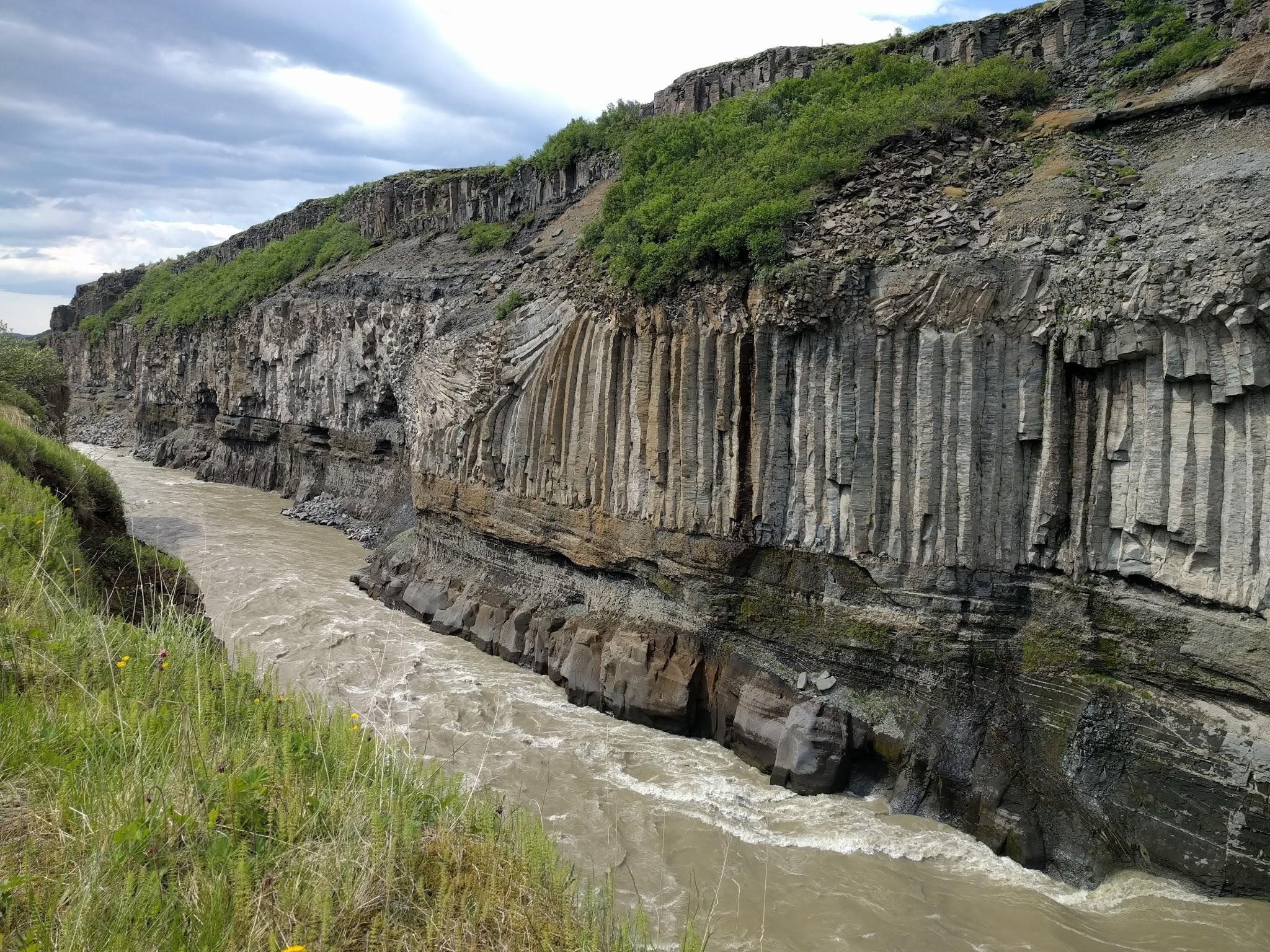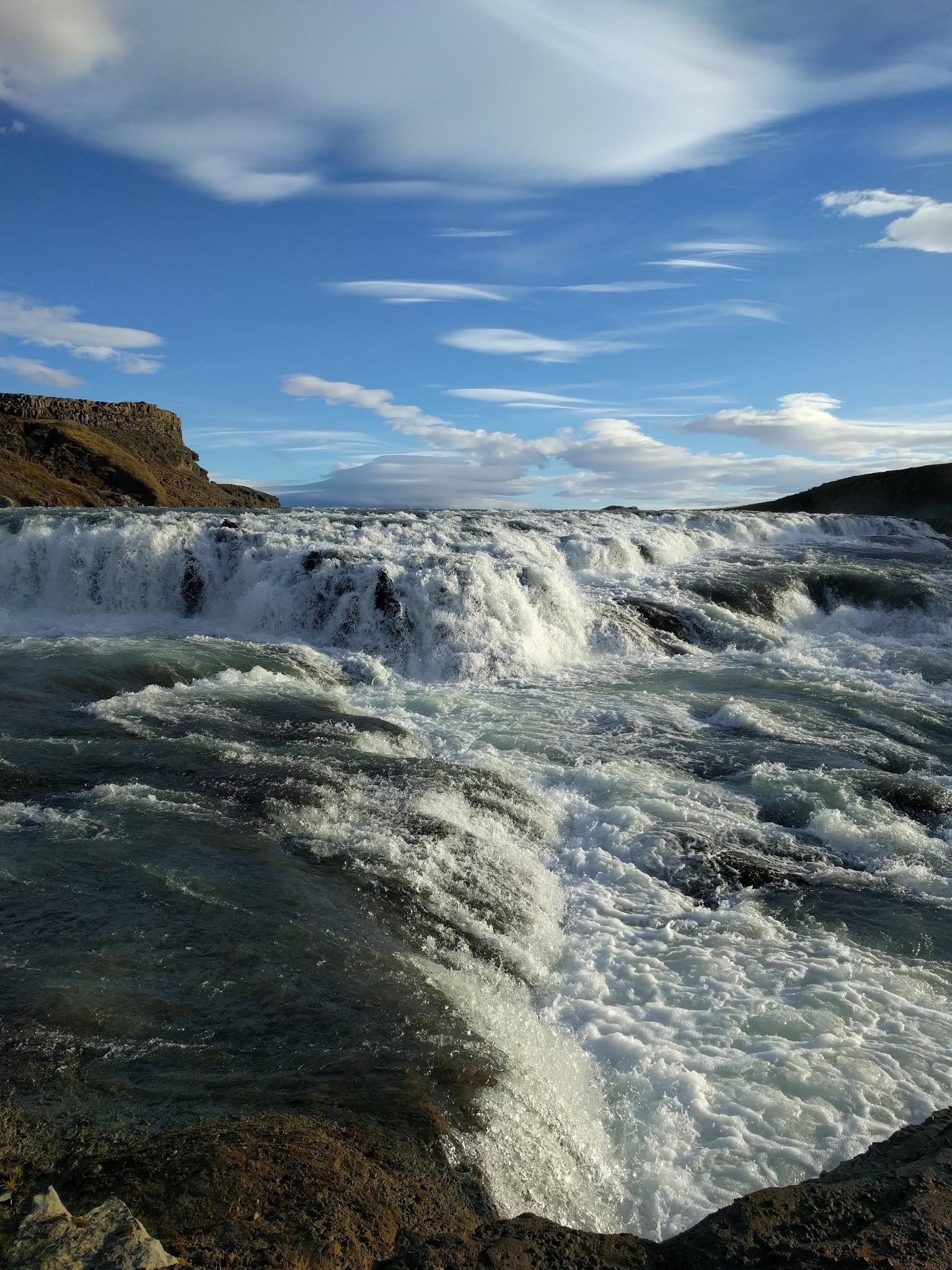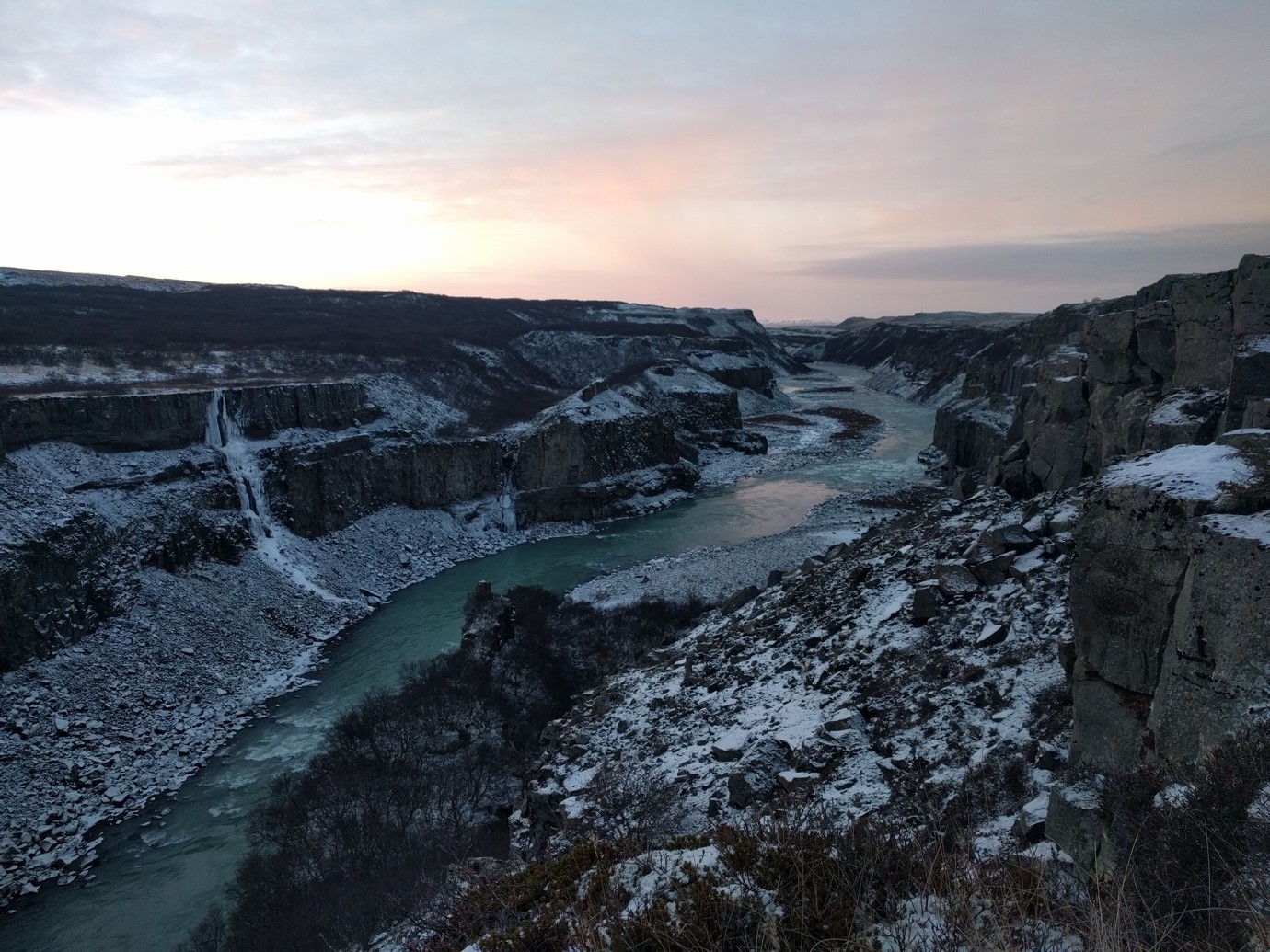Vinna við nýjar heimasíður Umhverfis- og orkustofnunar og Náttúruverndarstofnunar er í gangi. Heimasíða Umhverfisstofnunar er virk á meðan vinnunni stendur. Information in English
Culture and history

Through the years, many people have been interested in harnessing the power of Gullfoss, and this came close to fruition when a foreign company acquired ownership of the waterfall. Sigríður in Brattholt fought for the protection of Gullfoss and was victorious in the end. She is remembered for her feat by nature lovers.
The following chapters tell us about the life and work of Sigríður in Brattholt.
Sigríður Tómasdóttir in Brattholt
Sigríður was born in Brattholt on February 24th 1871 and lived there all her life. Brattholt was remote, mainly visited by travellers on their way to Gullfoss. Sigríður and her sisters often guided visitors to Gullfoss, and they built the first path that led down to the waterfall. The outlook of these people, who had often come a long way to see and enjoy Gullfoss, must have had an effect on Sigríður. Sigríður did not attend school but was well read. She performed all tasks, both outdoors and indoors. Sigríður was artistic, a good illustrator, did crafts and drew and sewed pictures of flowers and animals. Sigriður would often take long trips, both to herd sheep in the mountains and to the town, either walking or on horseback.
Sigríður died in Hafnarfjörður in 1957, at 87 years of age, and was buried in Haukadalur.
Sigríður is mainly remembered for her involvement in the protection of Gullfoss. A memorial was built by the waterfall in her honour in 1978.

The Battle of the Waterfall
At the turn of the century in 1900, people began to seek control of waterfalls in Iceland for electricity production and industry, often on behalf of foreign companies.
Early in 1907, an Englishman enquired about Gullfoss. He offered ISK 50,000. That equalled fifty times the fire insurance for Brattholt.
“I will not sell my friend,” said Tómas in Brattholt, Sigríður’s father. In the fall of 1907, a law was passed stating that only men and companies domiciled in Iceland could own Icelandic waterfalls unless with special permits and conditions. The law caused people to become inattentive, and unscrupulous buyers managed to obtain many of the largest waterfalls and greatest streams in Iceland, despite the law. When Gullfoss was bought by men representing foreign parties, Sigríður, the farmer’s daughter from Brattholt, defied some of the richest and most powerful men in the country in order to get the Gullfoss deal invalidated.
She often worked around the clock to follow up on her case. She took long trips over mountain roads and waded large rivers in all seasons and met with officials in Reykjavík. But to no avail. The judgement was not in the Brattholt family’s favour.
In 1928, the rent for the waterfall stopped coming and the rental agreement was void.
Sveinn Björnsson, President of Iceland, 1944–1952:
This started Sigríður’s battle to preserve the waterfall, and she came to me for legal advice. She wanted to try and invalidate the agreements her father had made or buy the rights back. When none of her attempts at this were successful, she opted to get her father to refuse to accept the annual payments for the rent of the waterfall. But to no avail, the annual payments were offered legally. She then threatened that when the ground-breaking for the power station took place, she’d throw herself into the waterfall and then see if they thought it would be prosperous to continue.
But things ended quite differently. The foreign parties that had acquired the rental rights to Gullfoss gradually lost interest in water harnessing in Iceland. The time came when the annual payments stopped coming. And in the end, the rental agreement became void. Now the Treasury owns Gullfoss, for the purpose of preserving it, as I understand it, as it is, as a beautiful natural phenomenon. And probably we Icelanders will never devolve to such an extent again, without the general public’s uproar, that Gullfoss would be disturbed by man. Protests would be so vehement that it is not considered feasible. Sigríður in Brattholt’s battle will not have been in vain, and she deserves to be remembered for her conservation efforts.
Einar Guðmundsson in Brattholt
Einar was born on November 4th 1904 and was fostered in Brattholt as a young boy. Einar bought Brattholt from Sigríður Tómasdóttir in 1939. The Icelandic government bought Gullfoss from Einar and the owners east of the river in 1945. Einar donated the land next to Hvítá and Gullfoss to the Treasury in 1974.
Einar wrote to the Nature Conservation Council:
Nature Conservation Council!
According to the Nature Conservation Register, the protection of Gullfoss and the area around it is being prepared. In relation thereto, I, as owner of the property Brattholt, owning land next to Gullfoss, would like to state the following: I am willing to provide for protection as much of my land containing Hvítá as the committee feels is desirable to protect and for which an agreement can be reached.
If the Nature Conservation Council is willing to attend to this, I would request an answer as soon as possible.
Respectfully,
Brattholt, 15.10. 1975
Einar Guðmundsson
Einar donated part of Brattholt to the Nature Conservation Council on December 11th 1976 without any obligations other than that the land would be fenced before the end of 1977 and that it would only be used in accordance with the spirit of the Nature Conservation Act. The Minister of Education signed an announcement on the protection of Gullfoss on March 9th 1979.
Einar died on September 27th 1985.
For thousands of years, water has flowed through these riverbeds; brought joy to Sigríður in Brattholt with its beauty and majesty; threatened tourists, poor as well as rich; wet the feet of Ragnheiður Brynjólfsdóttir and drowned Jón Gerreksson, the bishop of Skálholt; and hidden mysterious creatures.
“It is now widely proclaimed, and certainly on persuasive grounds, that the country’s waterfalls harbour a part of our nation’s future, a treasure which is measured in kilowatt-hours. But there is also a part of the nation’s future felicity found here – that we do not forget that the country’s waterfalls also harbour value that is not measured in money but in hours of pleasure.”
From paper No. 2. Waterfalls in Iceland, (1978)
There was once a thriving settlement on the east bank of Gullfoss, and there are records of seven farms that are now
deserted but were in an area called Hvítárhamrar. Eruptions in Hekla and wind erosion probably played a part in the settlement above Gullfoss being abandoned.
There are cultural remains within the nature reserve. These are mainly roads, stone-built fences and sheepcotes. Most of these remains are by Hvítárgljúfur, near Brattholt.
Management and Services
The Environment Agency of Iceland is responsible for the management of the reserve. Land protection is active in the area all year round, and land rangers oversee, amongst other things, maintenance and information supply in the area.
A restaurant, coffee shop and shops are located by the upper parking lot in Gullfoss.
Hotel Gullfoss is located at the south end of the nature reserve. There are camspites in many places in the municipality, i.a. Skjól and the Geysir campsite.
Outdoor Activities and Hiking Trails
In addition to the main footpaths that run from the parking lots to Gullfoss, there is a marked hiking trail that runs from Gullfoss to Brattholt and is approximately 3 km, 6 km both ways. Hiking this footpath is rather easy, and it offers a magnificent view over the Gullfoss canyon.
